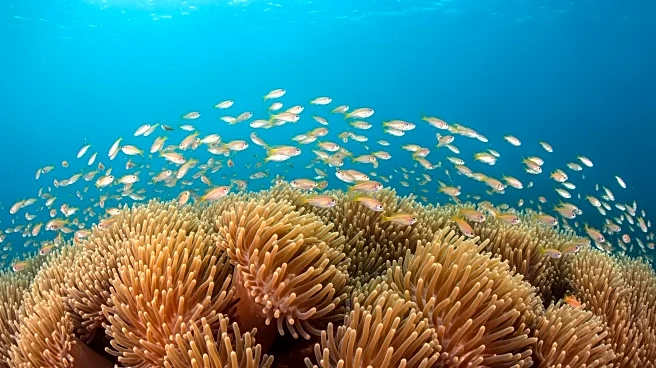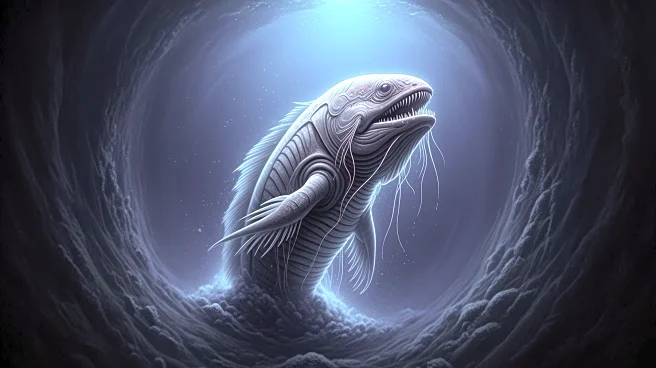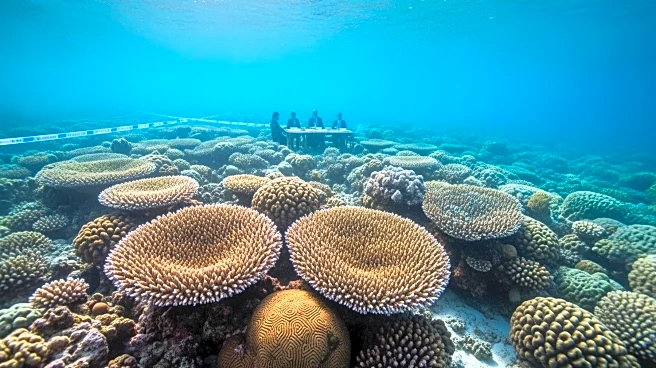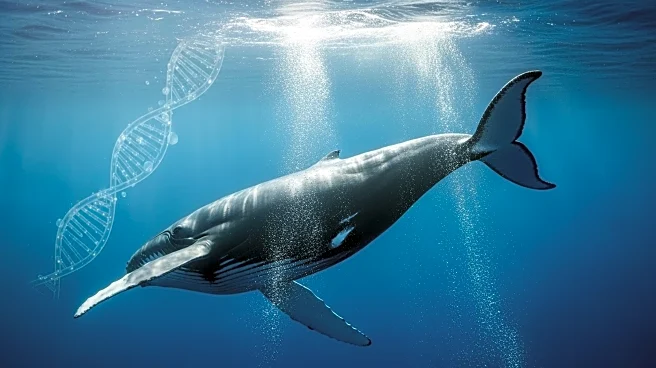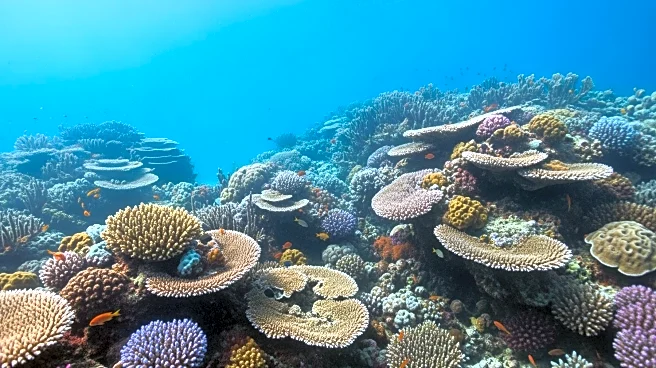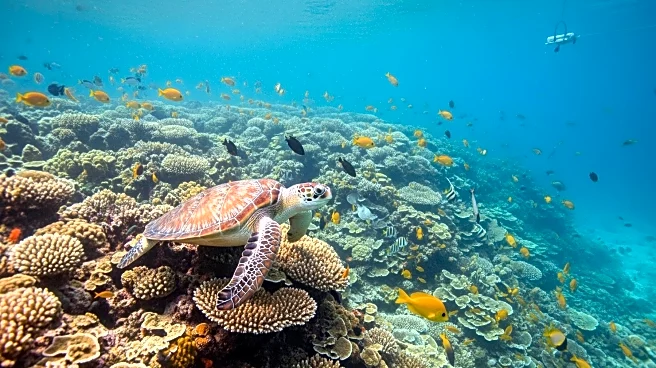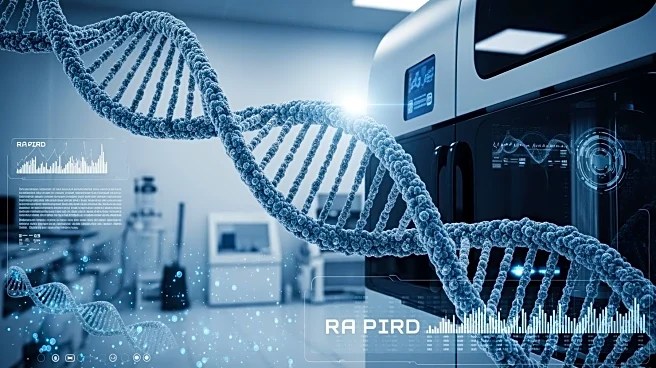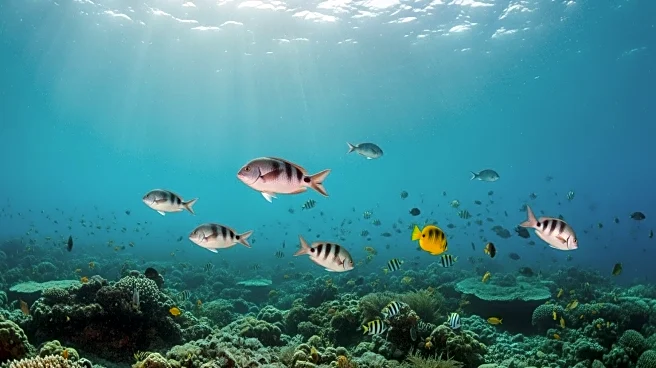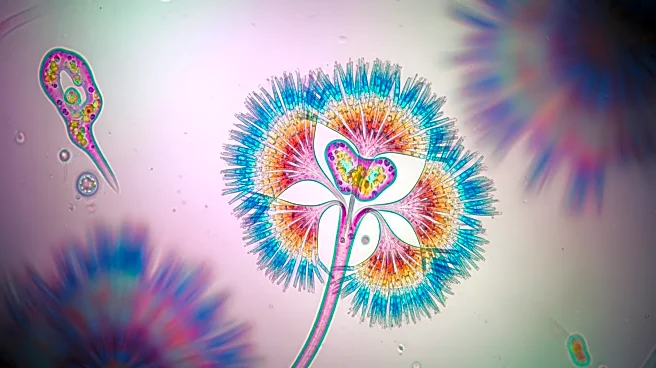What's Happening?
A recent study published in the Journal of Fish Biology has uncovered fascinating interactions between young fishes and larval sea anemones. Blackwater divers, including Rich Collins from the Florida Museum
of Natural History, have captured photographs showing larval and juvenile fishes using anemones for protection. These anemones, which are close relatives of jellyfish, possess stinging capabilities that the young fish exploit for defense. The study highlights how these fish carry or hide behind the anemones, a behavior rarely observed before. This discovery was made during the nightly migration of deep-sea creatures to the ocean surface, providing a unique opportunity for divers to observe these interactions.
Why It's Important?
The findings from this study offer new insights into the survival strategies of marine life, particularly during their vulnerable early stages. Understanding these interactions can contribute to marine biology by revealing how young fish adapt to their environment and evade predators. This knowledge is crucial for conservation efforts, as it can inform strategies to protect marine ecosystems and biodiversity. Additionally, the study underscores the importance of blackwater diving as a method for observing and documenting marine life, potentially leading to further discoveries in oceanic research.
What's Next?
Future research may focus on exploring other symbiotic relationships in marine environments, potentially uncovering more survival tactics employed by young marine species. Scientists might also investigate the ecological impact of these interactions on marine biodiversity and how they influence the population dynamics of both fish and anemones. Conservationists could use this information to develop targeted protection measures for vulnerable marine species, ensuring the sustainability of ocean ecosystems.
Beyond the Headlines
The study raises questions about the evolutionary adaptations of marine species and their ability to form symbiotic relationships for survival. It also highlights the role of photography and diving in advancing scientific knowledge, demonstrating how technology can aid in the exploration of natural phenomena. This could lead to increased interest in marine biology and inspire new methods for studying underwater ecosystems.
